
Many years ago I did an article for the Piping Times detailing the must-see piping monuments and venues dotted around Scotland. They included the Angus MacKay Cairn on the Nith, the College of Piping, the Bobs of Balmoral Cairn on Deeside and Calum Piobair’s monument in Badenoch.
To that list you may now like to add the Black Watch Museum, Perth. Among the many hundreds of items on display are a large number that are of piping interest. I recently spent a morning and afternoon appreciating them.
By the Editor
The piping tenor is established right away: on arrival you are met with the above sculpture in honour of the men of the 51st Highland Division of WW2.
Indoors there is this statement: ‘As the oldest Highland regiment, pipers have always had a very important role in the Black Watch. Right from the regiment’s first days each company was to have its own piper…..’
Admission was £8 or you could take the hour long guided tour for double that. Requiring to do my own thing, I opted for the former and was glad I did – there was so much to see.
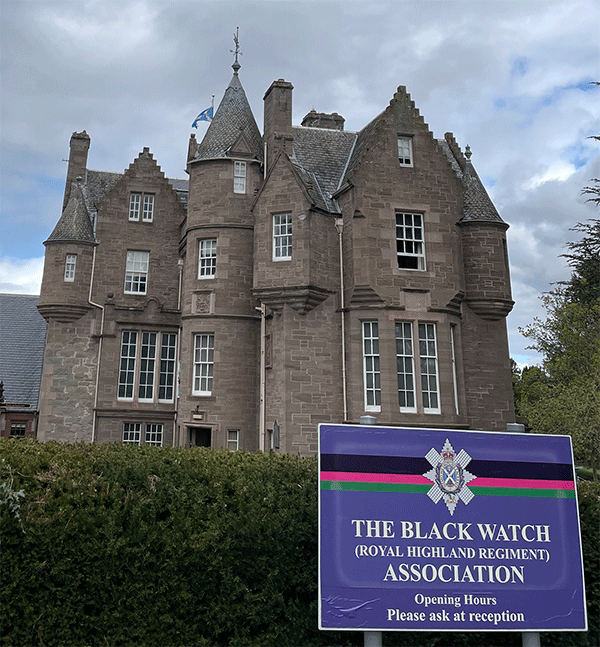
The museum is set out chronologically detailing the regiment’s history from its early days as the 42nd regiment up to the present time. There are highs and lows. The wall with the names of all those Red Hacklers who gave their lives in the Great War leaves one aghast. Then comes an uplift when we read of the bravery and camaraderie.
But let’s do a quick run through some of the piping exhibits. This print is of ‘Piper McDonnel’ one of four men singled out as leaders of a regimentsl mutiny of 1743:

The men said they had never signed up to serve outside Scotland, yet they believed they were about to suffer hardship and pestilence in the West Indies. Three of the ring leaders were executed by firing squad at the Tower of London. It pays to be a piper – MacDonnel was spared and sent to the then North American colony of Georgia instead.
This is an interesting set of pipes (below). They belonged to P/M John Buchanan who served with the regiment from 1794 until 1814 and fought in the Peninsular War. According to the blurb attached to the display, Buchanan won them at the Highland Society of London’s Edinburgh competition of 1802:
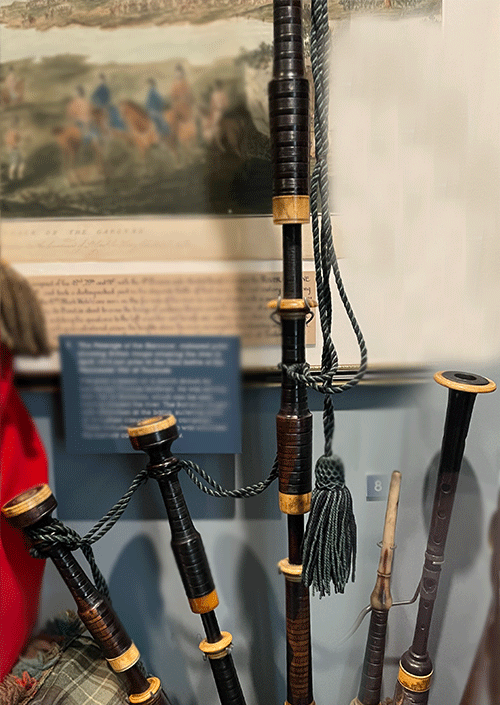
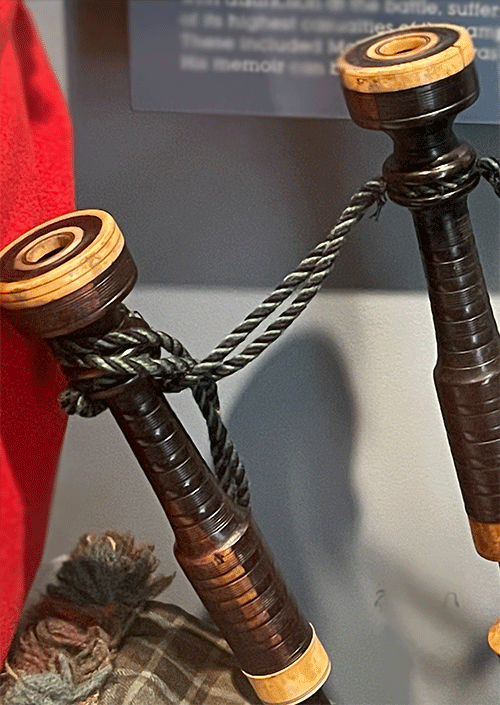
The pipes look in splendid condition given that they are over 200 years old and had been through that desperate campaign against Napoleon Bonaparte. Pipes for the Edinburgh competition were supplied by Donald MacDonald I believe, and these look as if they are of striped ebony.
The caption for our next picture tells us that this is an unfinished drawing of a piper of the 73rd Regiment (subsequently amalgamated with the Black Watch)…‘The most serviceable piper we had was our old Scotch bagpiper Hugh Mackay who, when the men were fatigued, on receiving a hint from the Colonel, would fall back to the rear, and striking up some lively tune on his pipes…would soon have the whole regiment about him like a cluster of bees.’
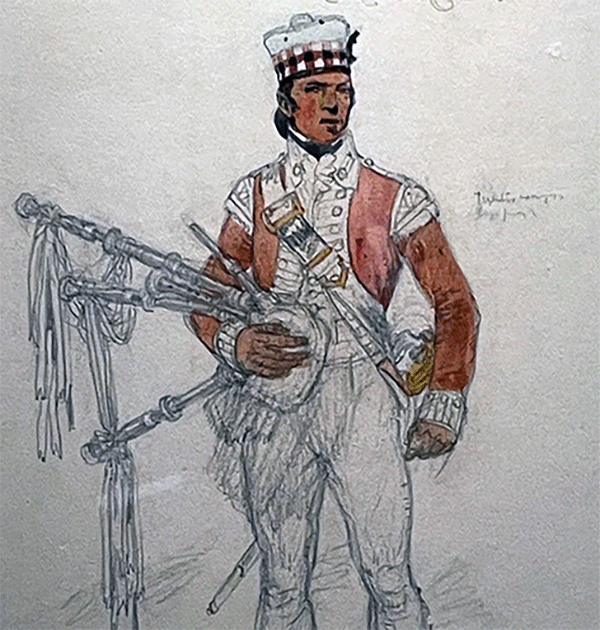
Is it too fanciful to suggest that this is the same Hugh Mackay who, with his namesake Angus, invented our ‘competition’ 2/4 march, the composer of classics such as Stirlingshire Militia and Crags of Stirling? The sketch is dated 1813 and Mackay is clearly a young man and weren’t the 73rd raised in Perthshire, the bounds not too far from Stirling?
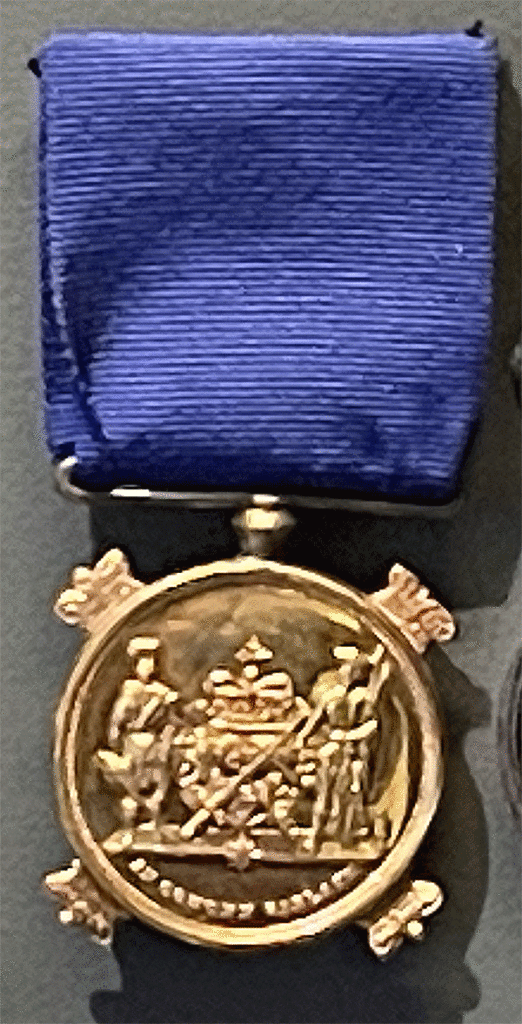
This Highland Society of London Gold Medal caught my eye. It is a more elaborate affair than the one handed out today at the Argyllshire Gathering and Northern Meeting – the four small crowns are no longer there and this one seems to be of real gold rather than today’s gold leaf version.
This medal was won by P/M William Ross, Queen Victoria’s piper, and the compiler of the 1860s book of piobaireachd and light music. The display says that Ross enlisted in the Black Watch in 1839 and was appointed Sovereign’s Piper in 1854 succeeding Angus MacKay.
There is no record that I could find of this William Ross winning a HSL Gold Medal at Oban or Inverness, so it must have been presented by that Society at some other competition or gathering.
A few more pictures:
There is much, much more to see in this engrossing museum. To fully appreciate it you need plenty of time. There is a good cafeteria for lunch. The Black Watch Castle & Museum, Hay Street, Perth, PH1 5HR; call 01738 638152











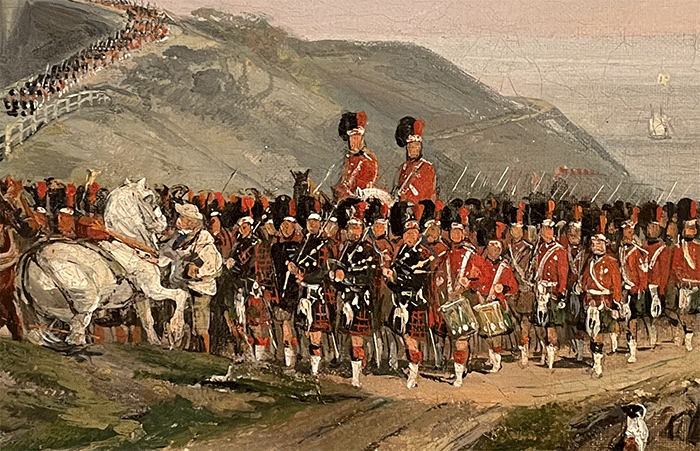
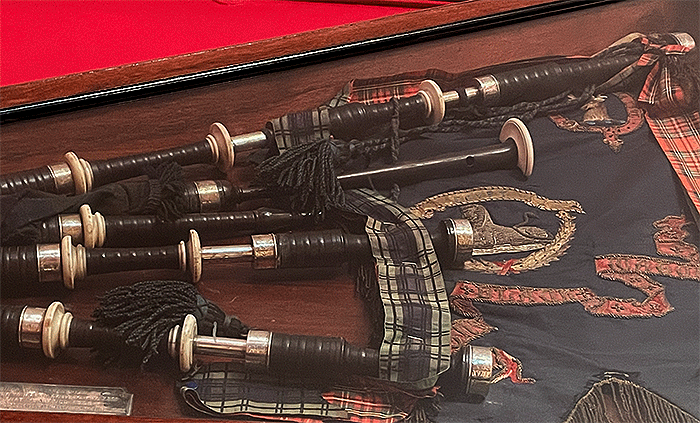

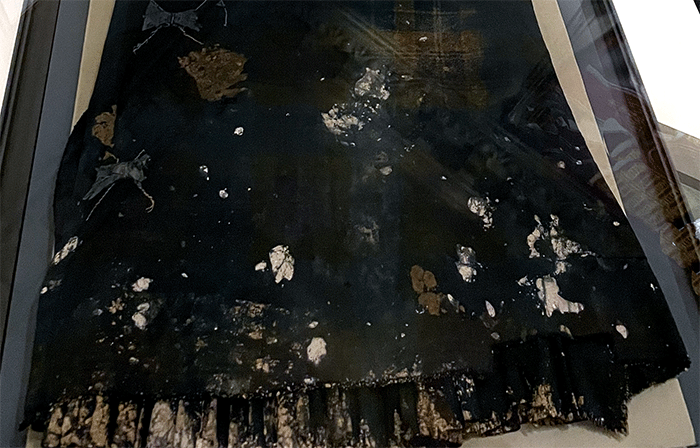
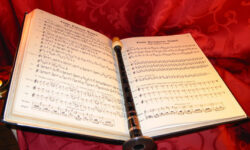
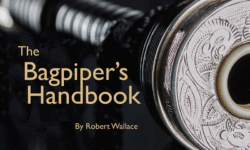
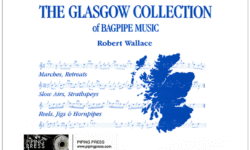





An excellent article which serves to raise the profile of the Black Watch Museum. The contributing factors leading to the 1743 mutiny do not put the establishment or the Army of the day in a positive light.
An accurate, and it has to be said amusing, account is provided by Bruce Fummey: see YouTube ‘Black Watch Soldier’. The treatment of the men involved was deplorable. As an example to the rest, three men were executed, they were: Corporal Samuel MacPherson, Corporal Malcom Macpherson and Private Farquhar Shaw. They were shot by firing squad.
They had enlisted to serve in the Highlands but had been marched to London where they feared they would be shipped to the West Indies, a virtual death sentence. Some of the mutineers were, indeed, sent to the Indies. The regiment was marched to Greenwich and shipped to Flanders to fight; the rest, as they, say is history.
About the set of pipes above, it’s curious because I own one which looks very close to this one, maker being MUIR WOOD and Co Edinburgh 1799/1804 made of laburnum wood (cytise) and bone mounts.
Mr. Robb
Have tried contacting the National Piping Centre and letting them have a look see at the pipes?
Dear George, I have spoken to a very pleasant and well informed young lady at T Black Watch Museum and I have promised to send her some photos which she will pass to the curators.
If the pipe is of any historical interest to the museum then I am sure that is the right place for the pipe.
Thanks for your comment, I will let you know how things go.
JimRobb
Thank you to all who participated in the Regimental Pipe Bands, past and present. ’tis the distinctive sound of the pipes that still motivates the ordinary people to rise beyond themselves.
A few years ago I bought, in Dunblane a fairly basic Hutcheon pipe which had “El Alamein 1942″scratched on the top of the pipe box which had clearly been an old mandolin case. The pipe was ( and still is) tied into a sheepskin bag to be played on the right shoulder. It has a blackwatch woolen cover. I seem to remember a photo of The Black Watch Band with a pipe sergeant playing on the right shoulder.
I phoned the museum in Perth to discus what should be done with the pipe which I thought was of more historical than musical value but before I could get a word in I was told very brusquely that before there could be any discussion I would have to join some sort of organisation which would require an upfront cash payment.
Being a bit of a snowflake I took offence at the man’s tone and pointed out that I was not a squaddie on the barracks square and ended the call.
I have kept the pipe intact and wonder if there might be someone at the museum who might know about this pipe and be interested in it as a display item and who might be less frightening for an old man.
I’ll phone again and see.
Thanks for this interesting article, Robert.
I have often stayed at Perth College Halls of Residence during the summer, when the College is used as a hostel by Hostelling Scotland (formerly the SYHA) of which I am a life member. It’s a great place to stay – bedrooms with ensuite and shared kitchens and massive car park.
Next time I visit Perth, I will definitely visit the Black Watch Museum.